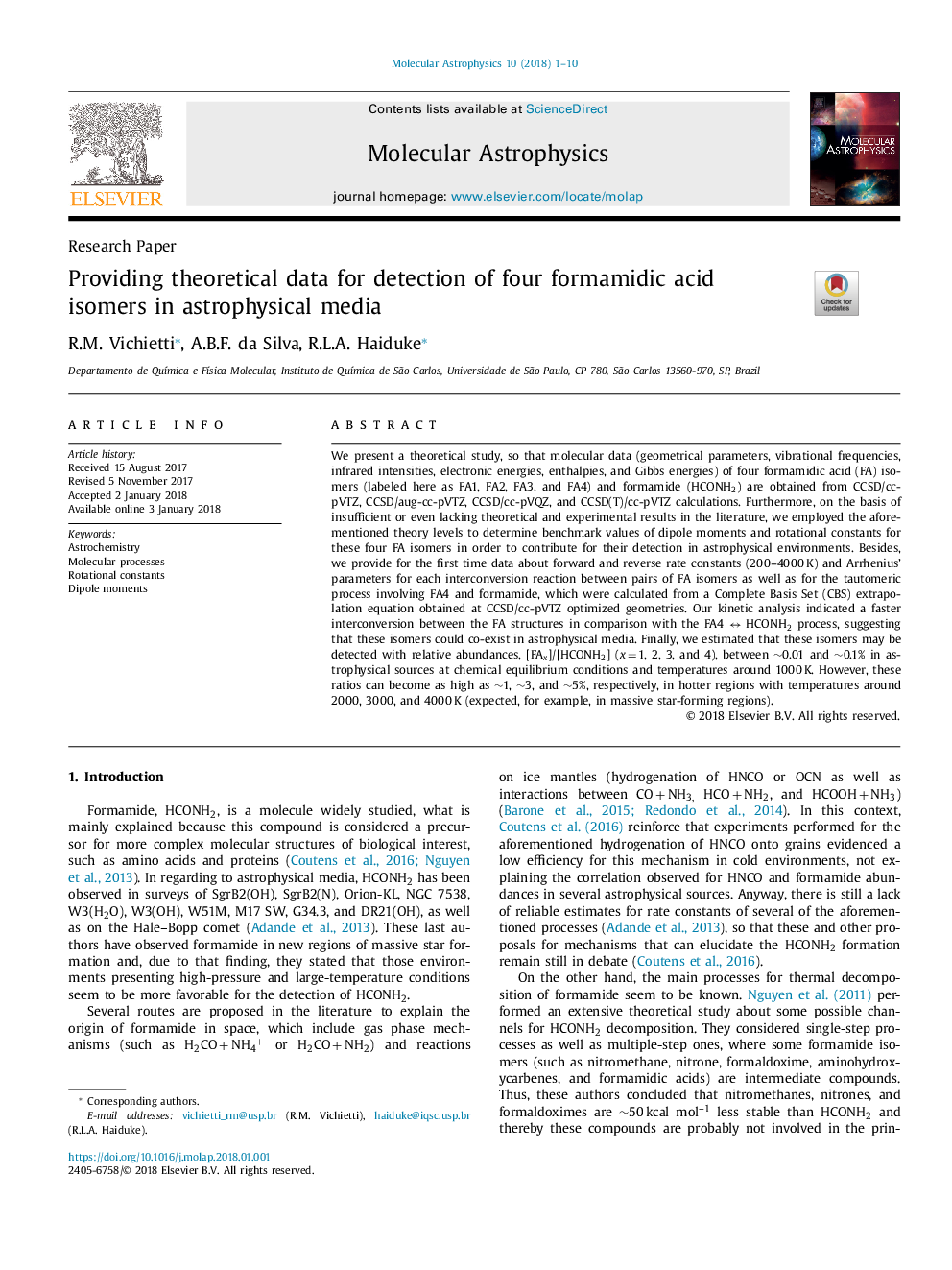| کد مقاله | کد نشریه | سال انتشار | مقاله انگلیسی | نسخه تمام متن |
|---|---|---|---|---|
| 7846588 | 1508765 | 2018 | 10 صفحه PDF | دانلود رایگان |
عنوان انگلیسی مقاله ISI
Providing theoretical data for detection of four formamidic acid isomers in astrophysical media
ترجمه فارسی عنوان
ارائه داده های نظری برای تشخیص 4 ایزومر اسید فرمامیدیک در رسانه های استروفی فیزیکی
دانلود مقاله + سفارش ترجمه
دانلود مقاله ISI انگلیسی
رایگان برای ایرانیان
کلمات کلیدی
آسترو شیمیایی، فرآیندهای مولکولی، ثابت های چرخشی، لحظات ناهموار،
موضوعات مرتبط
مهندسی و علوم پایه
شیمی
طیف سنجی
چکیده انگلیسی
We present a theoretical study, so that molecular data (geometrical parameters, vibrational frequencies, infrared intensities, electronic energies, enthalpies, and Gibbs energies) of four formamidic acid (FA) isomers (labeled here as FA1, FA2, FA3, and FA4) and formamide (HCONH2) are obtained from CCSD/cc-pVTZ, CCSD/aug-cc-pVTZ, CCSD/cc-pVQZ, and CCSD(T)/cc-pVTZ calculations. Furthermore, on the basis of insufficient or even lacking theoretical and experimental results in the literature, we employed the aforementioned theory levels to determine benchmark values of dipole moments and rotational constants for these four FA isomers in order to contribute for their detection in astrophysical environments. Besides, we provide for the first time data about forward and reverse rate constants (200-4000â¯K) and Arrhenius' parameters for each interconversion reaction between pairs of FA isomers as well as for the tautomeric process involving FA4 and formamide, which were calculated from a Complete Basis Set (CBS) extrapolation equation obtained at CCSD/cc-pVTZ optimized geometries. Our kinetic analysis indicated a faster interconversion between the FA structures in comparison with the FA4 â HCONH2 process, suggesting that these isomers could co-exist in astrophysical media. Finally, we estimated that these isomers may be detected with relative abundances, [FAx]/[HCONH2] (xâ¯=â¯1, 2, 3, and 4), between â¼0.01 and â¼0.1% in astrophysical sources at chemical equilibrium conditions and temperatures around 1000â¯K. However, these ratios can become as high as â¼1, â¼3, and â¼5%, respectively, in hotter regions with temperatures around 2000, 3000, and 4000â¯K (expected, for example, in massive star-forming regions).
ناشر
Database: Elsevier - ScienceDirect (ساینس دایرکت)
Journal: Molecular Astrophysics - Volume 10, March 2018, Pages 1-10
Journal: Molecular Astrophysics - Volume 10, March 2018, Pages 1-10
نویسندگان
R.M. Vichietti, A.B.F. da Silva, R.L.A. Haiduke,
